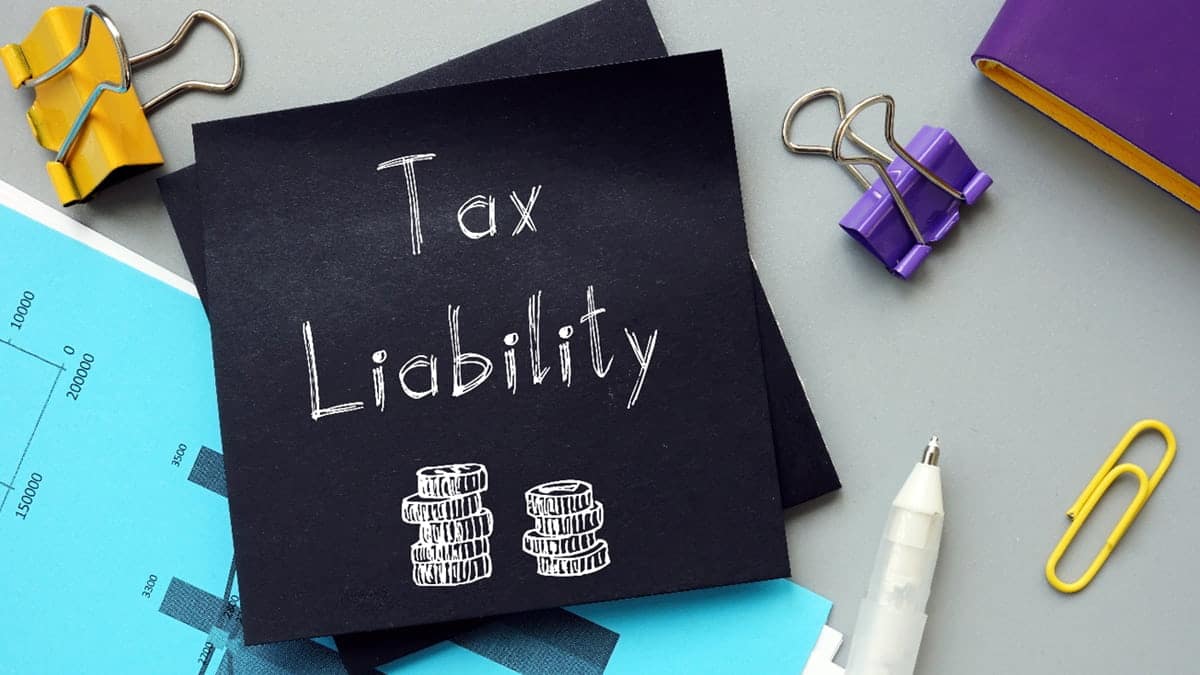What Is Tax Liability And How To Calculate It
Important Note: When you buy through our links, we may earn a commission. As an Amazon Associate we earn from qualifying purchases. Content, pricing, offers and availability are subject to change at any time - more info.
Tax terminology can be intimidating. But the truth is many of the terms are actually quite simple to understand, including “tax liability.”
Advertisement
If you find yourself asking, “What is tax liability?” you’ve come to the right place. Today, you’ll learn everything you need to know about tax liability, including how to calculate it.
What Is Tax Liability?
Simply put, your tax liability, or tax debt, is just how much you owe in taxes. This includes taxes at the local and state levels, as well as federal income tax.
For individuals who are employed, this number is based on tax heir income level and can be figured out by looking at the tax tables for the year. In general, as an individual, you just fill out a W-4 form at the start of your job that tells your employer how much tax they should withhold from your paycheck. Then, every tax season, they give you a W-2 that you use to figure out how much more individual income tax you owe, or if you are entitled to a refund after you complete your tax return.
If you are self-employed or run your own business, your tax liability is not only based on revenue but on the type of business you run. Businesses also have to make payments throughout the tax year – including payroll tax – and are responsible for estimating the amount of each tax payment they owe. This makes calculating your business’s tax liability a little more challenging.
Advertisement
How to Calculate Tax Liability
To calculate tax liability, take your total taxable income and subtract each tax deduction you’re eligible for – including an itemized deduction or standard deduction, if possible – to get your gross tax liability. From there, subtract each tax credit you’re eligible for to get your total income tax liability.
This may seem simple, but it does take an understanding of your business to accurately calculate your tax liability. Let’s break it down some more.
What’s Your Income?
Your first step toward finding your tax liability is to figure out your entity.
For example, all C corporations pay a flat tax rate of 21%, no matter how big they are or how much they earn. Not only do C corporations pay a corporate income tax, but they’re also taxed on profits distributed to owners as dividends, therefore paying taxes twice.
If the owner of the business is paid by the business, they must also pay taxes on that income when filing their personal taxes, essentially taxing that income twice.
Then there’s the flow-through entity, which sees that business owner paying taxes rather than the business itself. The owner’s filing status and taxable income are required to calculate a flow-through entity’s tax liability. The entity’s tax liability will differ based on whether the owner is filing as a single individual or jointly.
Advertisement
Add deductions and credits
Including deductions will reduce your gross taxable income, therefore reducing your tax liability. Common business deductions include:
- Internet and mobile costs
- Vehicle mileage (vehicle must be used for work)
- Insurance
- Business travel expenses
- Other business expenses
You have the choice between choosing a standard deduction or an itemized deduction. Standard deductions are ideal when you don’t have that many deductions. On the other hand, if you do have a lot of eligible deductions, itemizing them will benefit you the most.
Standard deductions are:
- $12,000 for a single taxpayer
- $18,000 for a head of household
- $24,000 for married filing jointly
In addition, there are many tax credits available that can further decrease your tax bill. Be sure to take advantage of all the ones you’re eligible for.
Don’t forget your estimated tax payments
If you own a business or are self-employed, you’re responsible for paying your federal taxes as they are incurred. That means that most small businesses have to make payments throughout the year, usually once per quarter, based on how much income they anticipate making during that taxable year.
Estimating quarterly taxes can be challenging, especially when you just start your business. It’s better to overestimate than underestimate in order to avoid penalties, but be aware that if you overpay, you have to wait for tax season to get that money back.
Employment taxes
If you have employees, your small business has to pay employment taxes based on the wages you pay them and yourself.
Advertisement
A portion of these taxes is paid by your employees, but as an employer, you’re responsible for withholding money from their pay to pass onto the IRS. Even self-employed individuals need to pay a self-employment tax, since they don’t have an employer to pay the other half for them.
Here are the main employment taxes you need to worry about:
- Social security tax: As of 2021, the social security tax equals 12.4% on wages up to $142,800. The employee pays half of this, while the employer pays the other half.
- Medicare: Also, as of 2021, the Medicare tax rate is 2.9%, also split between the employer and the employee.
- Federal unemployment tax (FUTA): The FUTA tax rate is 6% and applies to the $7,000 paid as wages to each employee during the year. You can pay into your state’s unemployment fund to reduce this amount to as little as 0.6%.
Make sure that your business is withholding the right amount for each of these taxes in order to avoid in problems during tax season.
Understanding Tax Liability
Whether you’re an individual employed with a company, or you’re a small business, it’s important to understand what your tax liability is and have an idea of how to calculate it.
Once you figure out what your tax liability is, your next step is to actually pay your taxes. It may take some budgeting and strategy throughout the year to accurately estimate the amount you’ll owe in taxes but understanding your tax liability will make this process easier and give you peace of mind as you continue to grow your business.




 Please Support Me on Ko-fi
Please Support Me on Ko-fi